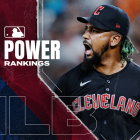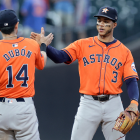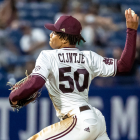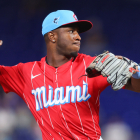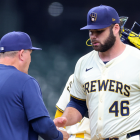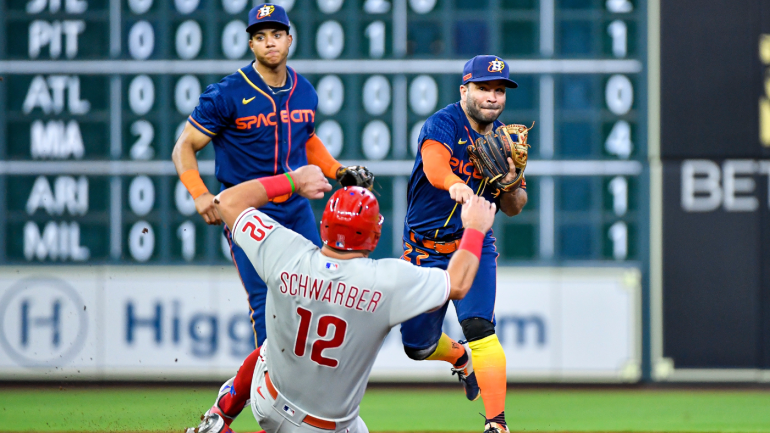
The Philadelphia Phillies and Houston Astros will begin the 2022 World Series on Friday night at Minute Maid Park in Houston, Texas. The Phillies, seeking their first World Series title since 2008, had to beat the St. Louis Cardinals, Atlanta Braves, and San Diego Padres to reach this point. The Astros, who last won the title in 2017, swept both the Seattle Mariners and the New York Yankees to punch their ticket.
On paper, the Astros would appear to be the superior team. Not only did the Astros win 29 more games during the regular season, but they posted a much better run differential: Houston outscored its opponents by 219 runs; Philadelphia, conversely, outscored its opponents by just 62 runs, or nearly a run per game fewer.
The beauty of postseason baseball is that macro analysis doesn't necessarily matter. After all, the Phillies have already defeated three teams who had better regular season records. Sometimes these series are decided by underlying dynamics that give one team an unexpected leg up. With that in mind, CBS Sports has highlighted three X-factors that may dictate the outcome of this year's World Series.
1. Four-seam strength on strength
During the regular season, the Astros threw the third-highest percentage of four-seam fastballs in the majors, behind only the Los Angeles Dodgers and the Minnesota Twins. Conversely, the Phillies posted the fifth-highest wOBA (a catch-all metric that more properly weighs on-base percentage than OPS) against four-seamers. (The Astros themselves ranked first in that category.) This series could be decided, then, by whose strength proves to be more dominant.
We will note that not all four-seam fastballs are created equally. The Astros as a staff, for instance, tend to rely on heaters with "rising" action that are thrown on a flat plane -- the combination creates a complex optical illusion for hitters to overcome. More than a handful of Houston's expected pitching staff had fastballs that averaged at least 18 inches of Induced Vertical Break during the regular season; the Phillies happened to perform relatively well on pitches of that nature, ranking third in wOBA.
While that would seem to be a good sign for the Phillies, bear in mind that the New York Yankees ranked fifth and the Seattle Mariners ranked seventh in wOBA against four-seam fastballs with at least 18 inches of IVB. Neither managed to win a game against the Astros in their respective playoff series.
2. The inside game
We've established that the Phillies hitters versus the Astros pitchers will be a matter of strength versus strength. Guess what? The same holds true for the battle between the Phillies pitchers and the Astros hitters. This time, it comes down to location.
The Phillies threw the second-highest percentage of pitches located on the inner half of the plate during the regular season, behind the Miami Marlins. José Alvarado, Bailey Falter, Ranger Suárez, and Zack Wheeler all exceeded the team average.
The Astros, conversely, had the sixth-highest wOBA on pitchers located on the inner half. Jose Altuve, Alex Bregman, Jeremy Peña, and Yordan Alvarez -- or essentially the top of Houston's lineup -- were all particularly good at pitches thrown inside.
As with the first section, we would caution against assuming to know which strength will win out. For as good as the Astros were in that location of the zone, the Braves (first) and Cardinals (second) were even better on paper. The Padres, 21st, were on the other end of the spectrum, suggesting they were at a huge disadvantage in the NLCS.
3. Defensive ability
If you're a Phillies fan, you're probably sick of hearing and reading about your club's defense. Still, the gap between the teams is large enough to merit pointing out as a potential determining factor in this series.
The Astros had the second-best defense in the majors during the regular season, preventing 25 runs according to Statcast's estimate. Center fielder Chas McCormick, shortstop Jeremy Peña, third baseman Alex Bregman, and right fielder Kyle Tucker all contributed at least four of those saved runs.
The Phillies, on the other hand, checked in with the second-worst defense, costing themselves 29 runs. The worst offenders were the corner defenders; Kyle Schwarber, Nick Castellanos, Alec Bohm, and Rhys Hoskins were responsible for five or more runs going the other way, again per Statcast's estimates.
Defense is a wild card because so much of it hinges on the difficulty of the opportunity. In one respect, though, we feel safe writing that the Phillies defense will be tested more than it has been, given how difficult the Astros are to strike out. Only the Cleveland Guardians punched out less frequently as a team during the regular season. The Astros, then, are likely to put more balls into play than any team the Phillies have faced this October. It stands to reason that only some of those have to have above-average difficulty to possibly swing the outcome of a game, and the series.
One point in the Phillies' favor: they've toppled the Cardinals and Padres, both of whom ranked among the 10 best strikeout rates.










